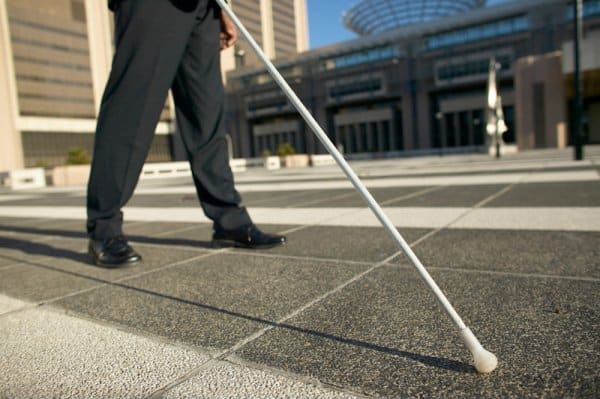Laws for a Pedestrian Legally Using a White Cane

Varying Laws by State
When it comes to the laws for a pedestrian that is legally using a white cane, it's important to note that these laws can vary by state. While there are some general guidelines that apply across the country, it's always a good idea to familiarize yourself with the specific laws in your state.
Some states have specific statutes that outline the rights and responsibilities of blind pedestrians using a white cane. These statutes may include provisions for the right-of-way, penalties for violations, and other important details. It's important to be aware of these laws to ensure the safety and well-being of blind pedestrians.
Additionally, some states may have additional laws or regulations that pertain to blind pedestrians using a white cane. These laws may address issues such as crosswalks, traffic signals, and other pedestrian safety measures. It's important to be aware of these laws and to follow them to ensure the safety of both blind pedestrians and drivers.
Right-of-Way for Blind Pedestrians
One of the most important aspects of the laws for a pedestrian that is legally using a white cane is the right-of-way. In general, drivers are required to yield the right-of-way to blind pedestrians carrying a white cane.
When a blind pedestrian is crossing the street at a marked or unmarked crosswalk, drivers must come to a complete stop and allow the pedestrian to cross safely. This means that drivers must not only yield the right-of-way to the pedestrian, but they must also wait until the pedestrian has completely crossed the street before proceeding.
It's important for drivers to be aware of blind pedestrians and to be prepared to stop when they see a white cane. Blind pedestrians rely on their white canes to navigate their surroundings, and it's crucial for drivers to respect their right-of-way and ensure their safety.
Accompanied by a Guide Dog
In addition to the right-of-way laws for blind pedestrians using a white cane, there are also laws that pertain to blind pedestrians accompanied by a guide dog. Guide dogs are specially trained to assist blind individuals in navigating their surroundings, and they play a crucial role in the mobility and independence of blind pedestrians.
When a blind pedestrian is accompanied by a guide dog, drivers are required to yield the right-of-way to both the pedestrian and the guide dog. This means that drivers must come to a complete stop and allow the pedestrian and guide dog to cross safely.
It's important for drivers to be aware of guide dogs and to be prepared to stop when they see one. Guide dogs are easily identifiable by their harnesses, and drivers should always be on the lookout for them when approaching a crosswalk or intersection.
Penalties for Violations
Violations of the laws for a pedestrian that is legally using a white cane can result in penalties for drivers. The specific penalties can vary by state, but they often include fines and, in some cases, misdemeanor charges.
For example, in some states, drivers who fail to yield the right-of-way to a blind pedestrian using a white cane may be subject to a fine of up to several hundred dollars. In more serious cases, such as if the failure to yield results in an accident or injury, drivers may face misdemeanor charges and more severe penalties.
It's important for drivers to understand the consequences of violating these laws and to take them seriously. By yielding the right-of-way to blind pedestrians using a white cane, drivers can help ensure the safety and well-being of these individuals.
In conclusion, the laws for a pedestrian that is legally using a white cane are designed to protect the rights and safety of blind individuals. These laws vary by state, but in general, drivers are required to yield the right-of-way to blind pedestrians using a white cane or accompanied by a guide dog. Violations of these laws can result in fines or misdemeanor charges. It's important for drivers to be aware of these laws and to respect the rights of blind pedestrians to ensure their safety on the road.
Deja una respuesta
Lo siento, debes estar conectado para publicar un comentario.

Entradas relacionadas